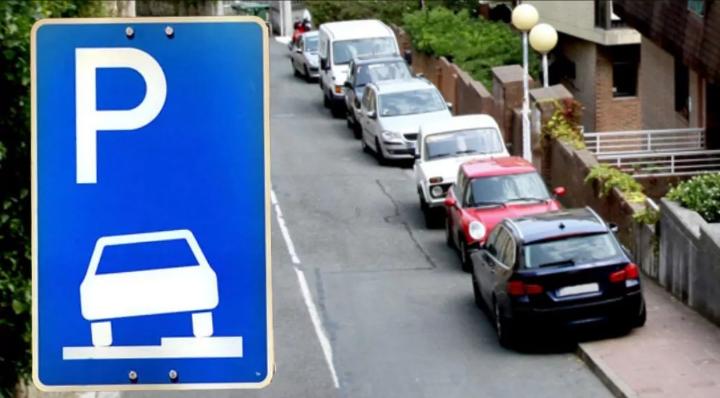
Parking on sidewalk in Germany. Driving fines in Germany. If there aren’t marked parking spots, some drivers decide to park on the sidewalk. But this can cost a lot. Looking for a parking spot can take a long time and be bothersome. Some people, feeling desperate, wonder: Can we park on the sidewalk? The law keeps pedestrians safe and basically says sidewalks are for walking, not parking. Yet, there are times when this rule doesn’t apply.
Parking on the pavement is usually not allowed
The German Road Traffic Regulations (StVO) don’t directly forbid parking on the pavement. However, the traffic rules imply this prohibition. According to Section 2 of the StVO, vehicles must utilize the roadway, and sidewalks are not considered part of it. The regulation emphasizes that vehicles should use the right lane out of two lanes, explicitly excluding sidewalks. Furthermore, Section 12 specifies that if parking on the sidewalk is allowed, it should be restricted to the right-hand sidewalk, or on one-way streets, either the right-hand or left-hand sidewalk.
Read also: Mandatory tests for all drivers: The EU parliament have made a decision
There aren’t any legal exceptions for motorcyclists, although authorities might overlook it if two-wheeled vehicles aren’t obstructing. However, generally, anyone who parks on the pavement risks receiving a fine. According to the Association for Citizen-Oriented Transport Policy (VFBV), fines range between 55 and 70 euros, depending on the duration of the parking. If parking on the sidewalk results in material damage, the fine can increase to 100 euros, as reported by t-online.
If emergency vehicles are blocked, the fine escalates to 80 euros and one point is added to the offender’s record in Flensburg. According to a court in Berlin, individuals who park illegally might even face the possibility of having their driver’s license revoked.
Read also: Important updates for German drivers in 2024
Parking on the pavement can lead to the vehicle being lifted
Simply parking on the sidewalk isn’t grounds for the car to be towed. However, if there’s a hazard or obstruction, authorities have the discretion to summon the costly towing service. In areas where numerous drivers habitually park on the pavement, towing actions may be taken as a deterrent for other road users. This was affirmed by the Higher Administrative Court of Münster in 2011.
Are there exceptions to the sidewalk parking ban?
There are exceptions regarding pavement parking. The blue sign displaying a capital P indicates how parking on the pavement is permitted, such as with two wheels on the pavement. However, vehicles weighing more than 2.8 tons are excluded, and as per Section 12 of the StVO, parking “over manhole covers and other closures” is not allowed.
Read also: Speeding fines in Germany 2024: Know the penalties for exceeding speed limits
If a person disregards the instructions of the traffic sign when parking, meaning they don’t park as indicated by the sign or markings, they could face a fine of 10 euros. If illegal parking obstructs other road users, the fine can increase to 15 euros. Typically, these fines serve as warning fees from the law enforcement office, commonly known as traffic tickets.
If you persistently park incorrectly for an extended period, such as several hours, security guards may cease issuing parking violation warnings. At this point, the prohibited behaviour is considered a traffic violation and could result in higher fines, sometimes reaching up to 100 euros.
How to recognize a sidewalk
Sidewalks are typically easy to identify. They’re either separated from the road by a curb or paved differently. Sometimes, there’s also a colored marking. Sidewalks serve to shield vulnerable road users, such as pedestrians, from traffic. When sidewalks are obstructed, pedestrians are forced to navigate around the obstacle on the potentially hazardous road, posing a threat to life. Consequently, parking on the pavement is often prohibited to ensure pedestrian safety.
